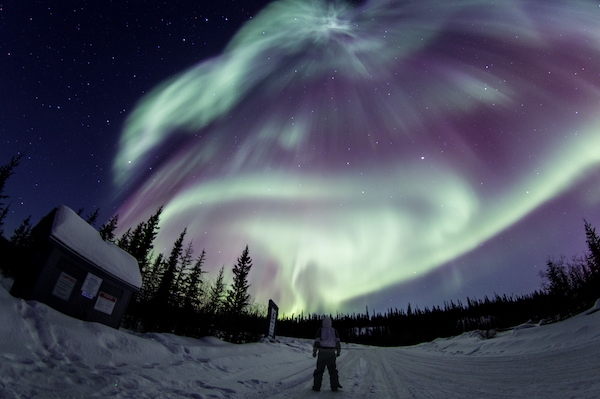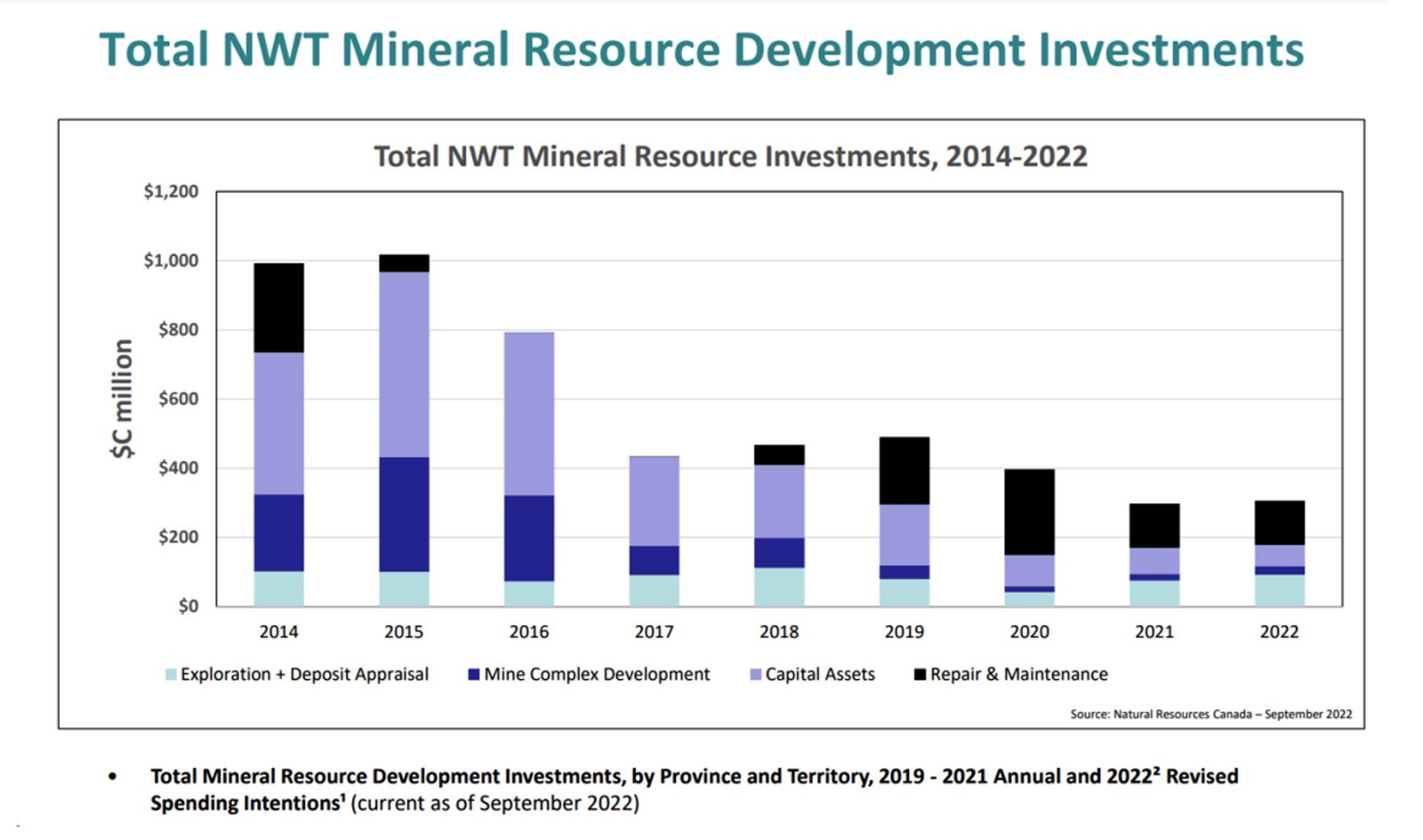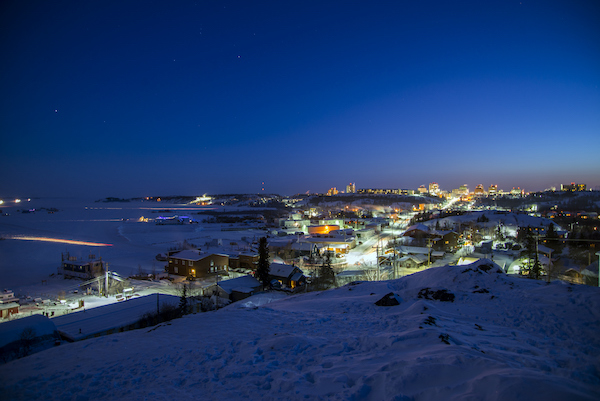Lithium Mines: Economic Forts to Keep China and Russia Out of Canada’s Arctic
As a longstanding mining executive in the Artic, it’s time to sound the alarm about Russian and Chinese encroachment in Canada’s far north. Earlier this year, the first Chinese spy balloon was shot down by American forces after it snuck into Alaska, down into the Yukon and into central B.C., before re-entering U.S. airspace, followed by three other objects.
Recently, the leader of Canada’s Northwest Territories (NWT) sounded the alarm, warning that the inexorable depopulation of this massive northern frontier is opening the door to territorial encroachment by unfriendly foreign powers.
In June 2023, the Canadian Parliament’s committee on national security and defence issued a report with urgent warnings, calls to action and concluded that ‘more must be done’ by Canada’s government to secure its Arctic territory and nourish the health and prosperity of the people who live there.
The North American Aerospace Defense Command (NORAD), the United States and Canada bi-national organization charged with the missions of aerospace warning, aerospace control and maritime warning for North America, has a full plate this year with Canada’s northern border as America’s first line of defence.
Furthermore, China’s ascendancy as a military and economic rival to the US is not the only existential challenge that’s now front and centre. Russia is also flexing its muscles in the Arctic, with designs on its vast mineral wealth, including prolific oil reserves. Increasingly, Putin’s military-grade “research” ships are patrolling aquatic Arctic trade routesbetween Europe and Asia – a seaway that passes through Canada’s NWT and its adjoining Nunavut territory.

Truth be told, there’s a clear and present danger of losing Canada’s far north to Russian and Chinese imperial expansionism. I’ve spent decades working in the mining business in the NWT and I know from first-hand experience why the stakes are so high. But don’t just take my word for it.
It bears repeating that politicians in both the US and Canada are getting very worried. They include U.S. President Biden, who is eager for Canada to make upgrades to the Artic to accommodate defence aircraft. A former Canadian defence minister, Peter MacKay, is blunt in his assessment. He said that “the security vulnerability of the high Arctic requires urgent attention.”
It’s the harsh reality of a new Cold War with our ideological adversaries. It seems they are hell-bent on encroaching on Canada’s Arctic sovereignty for political, military, and economic gain. In particular, the huge, sparsely populated NWT is rich in diamonds, as well as the “critical minerals” that are so crucial to North America’s green energy revolution.
Again, it bears repeating that the NWT and Nunavut are home to much of the famed Northwest Passage. Yet Russia has long contested Canada’s control over this increasingly important economic link between two continents.
So, Canada needs to stand firm. Thankfully, it’s not too late to act. We don’t necessarily have to be on the losing side in this epic power struggle to keep the communists out of America’s northern back yard.
The solution is a win-win for both Canada and the US. What we truly need is more mines in the NTW, Nunavut, and the Yukon. Together, these three jurisdictions total around four million square miles -- half the size of continental USA.
Their remoteness also makes them ideal places for building mines, which are increasingly unwelcome in heavily populated southern regions. And the sheer scale of this under-explored, geologically-fertile land mass suggests that multiple new mines are still waiting to be unearthed.
The recent commissioning of the rare earth minerals Nechalacho mine in the NWT is a great step in the right direction. This now brings the region’s tally to four mines. It does not sound like much, but the three diamond mines have long been the backbone of the NWT’s economy. In fact, they have generated tens of billions of dollars in revenue and have created many well-paying jobs, as well as ancillary industries.
Again, it’s well worth reiterating that there’s room for plenty more mines in the NWT, which spans 1.4 million square miles (nearly 10 times the size of California). In particular, the prospect of future lithium mines in the NWT looms large.
The over-arching imperative now is for politicians and business leaders to collaborate financially towards the cost of beefing up the NWT’s economy.
In addition to building new mines, there needs to be major infrastructure projects, such as highways to connect new mines with markets in Canada and the US. This will go a long way towards sustaining the NWT’s already fragile population of a mere 40,000 people.

Keep in mind the fact that Diavik -- one of the region’s three diamond mines -- is finally coming to the end of its life in 2025 after nearly 22 years in operation. The high-paying skilled jobs that will be lost need to be replaced. Otherwise, the mine’s mostly indigenous Innuit workers will be forced to move away from the NWT to find employment elsewhere.
Also, consider the sobering fact that the mine’s contribution to NWT’s gross domestic product was $430 million in 2019. Overall, Diavik accounts for about 10 per cent of the NWT’s total GDP, with $9.3 billion having been spent on operating the mine since 2000.
An economically empowered NWT will show our adversaries that this part of Canada is worth fighting for. Plus, the solution to preventing the incremental de-population of the NWT is to build more mines, which will prevent an exodus of workers to sunnier climes.

Such realistically achievable goals will prove to be the ultimate deterrent to Russian and Chinese interlopers. This will help protect the mineral wealth that Canada and the US will increasingly come to rely on to build electric vehicles. It will also help safeguard the national security of both nations.
Ultimately, this is a far more cost effective and pragmatic strategy than the ultimate fall-back scenario, which is to pepper the NWT with military bases – at an exorbitant cost to taxpayers. Thankfully, the NWT’s political leaders also see it this way. They are even helping fund my latest project to find the NWT’s first ever lithium mine.
If we fail to act, it is at our own peril. For now, let’s regard the sight of Chinese spy balloons covertly drifting over Canada’s Great White North as a welcome warning sign. If we don’t heed such audacious provocations, they will eventually be followed up with Chinese or Russian boots on the ground.
Let’s keep all of Canada resolutely Canadian, not just most of it. In so doing, we can proudly protect America’s northern border too. As the time-honoured adage goes: United we stand. Divided we fall.”
Patrick Power is CEO of Lake Winn Resources Corp., (TSXV: LWR), OTCQX: EQTXF) (FSE: EE1A), a mineral exploration company focused on advancing its fully-owned lithium project in the western Northwest Territories (NWT), near the Yukon Border. A veteran mining executive, Power and his companies have spent about $100 million to date developing sustainable mining projects in Canada’s northern economies including NWT and Nunavut. He can be reached at: [email protected].
Lake Winn Resources | www.lakewinn.ca
Author: Patrick Power












